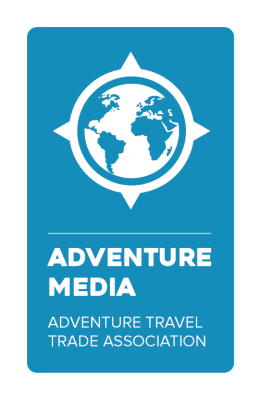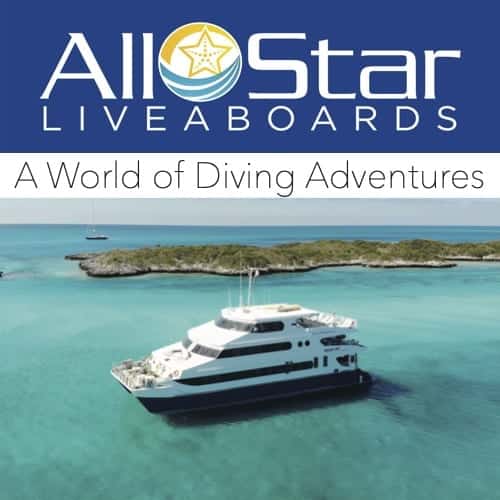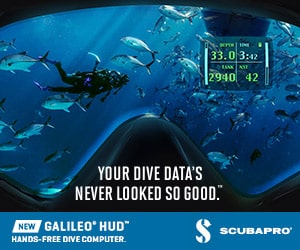Can you imagine anything more vulnerable than baby sea turtles? Turtle Treks save sea turtles from the bright lights of South Florida and give you an unforgettable experience.
Turtle Treks are volunteer-run outings from June-September in Fort Lauderdale that gives people a chance to help with sea turtle rescue. 1 in 3 sea turtles gets confused by the city lights and head into traffic instead of the ocean.
For about $25, Everyday citizens get to join this eco-adventure, learn about sea turtles, and maybe see the miracle of baby sea turtles being born or a mother laying eggs. What’s more, 100% of the proceeds from Turtle Treks goes to turtle conservation through the non-profit Sea Turtle Oversight Protection.
We never knew how much danger these little guys were in. All we wanted to see was something beautiful. We left with an appreciation of how man has impacted turtles, but we can also help save them.
Keep reading to learn more about our transformative experience and how you can make a difference and participate in this amazing eco-tour on your next Florida getaway.
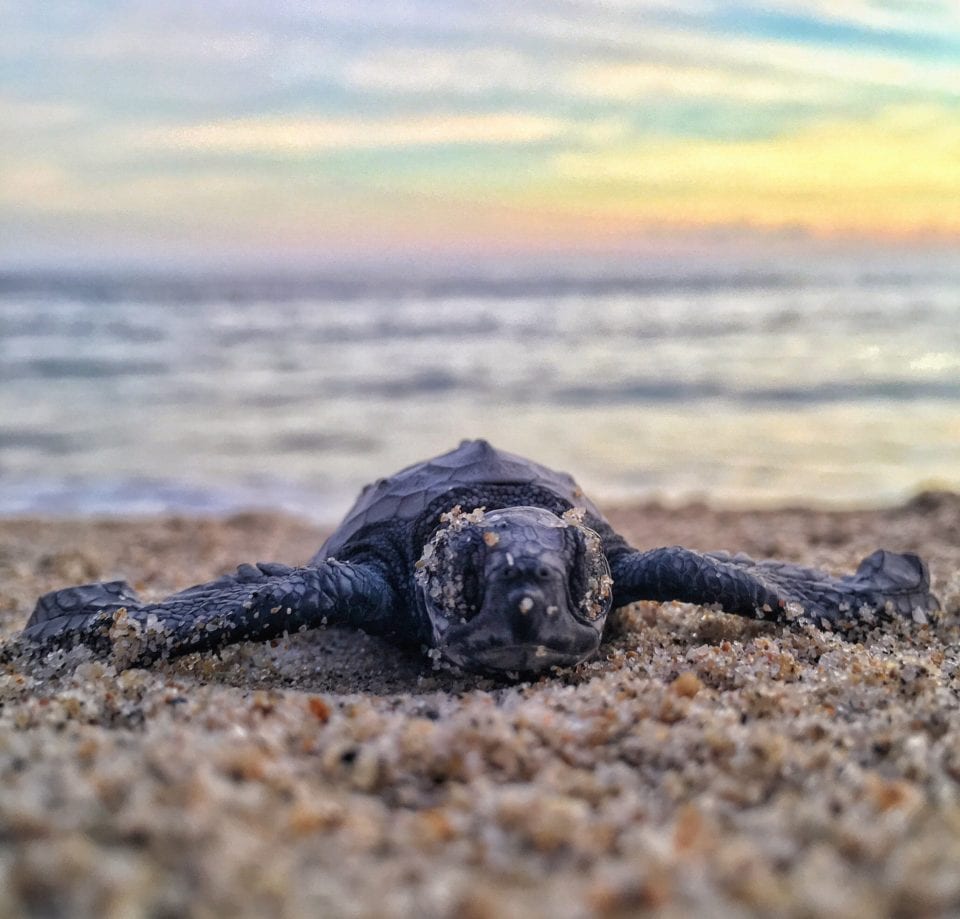
Our Reasons for Wanting to See Baby Sea Turtles
We have been chasing baby sea turtles for years now. We heard sea turtles lived by San Diego and even saw a picture every now and then but never in real life. Going to Hikkaduwa Sri Lanka was supposed to be that experience.
We woke up at dawn to see turtles on the beach and went to a turtle hatchery later in the day. We saw a lot of baby sea turtles, but it was kind of meh. They seemed more like props for tourism than subjects of environmental protection.
There was always some local on the beach looking to earn tips by having you feed the turtles and, while the hatcheries produced a lot of hatchlings that they returned to the sea, there was no magic in the moment.
After moving to Florida, we kept our eyes out for that magical baby sea turtle encounter. You know, the one where those little guys broke free of their sandy nest and made a mad dash for the ocean.
We imagined fighting off seagulls and crabs while we guided them to the finish line with our flashlights. What we got was much more sublime and magical in every sense of the word.
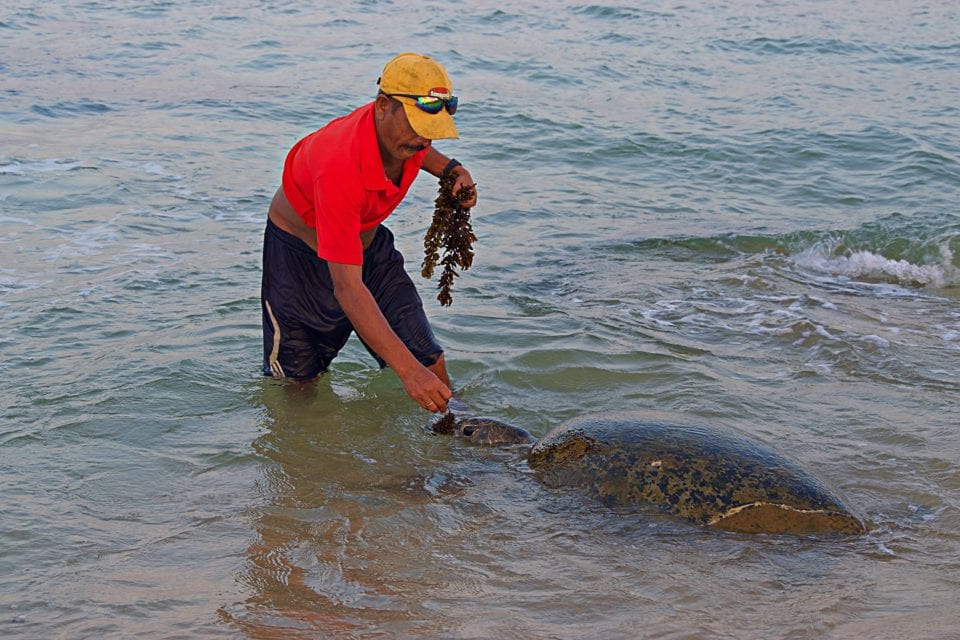
Arriving at Sea Turtle Oversight Protection
Sea Turtle Oversight Protection (STOP) is located in an unassuming building off of Fort Lauderdale Beach. It looks like the type of structure where tourists might buy sunscreen and beach towels or maybe a six-pack of beer. Instead, they offered boxed water, information about turtles, and the promise to make a difference.
It was a packed house that night, as it often is. Twenty-eight concerned citizens had paid to come along with the volunteers on their night’s rescue mission. Before we hit the beach, we sat down to watch a video to learn more about turtles and what STOP is doing to help.
Dangers Facing Baby Sea Turtles in Broward County
In the last decade, Sea Turtle Oversight Protection has helped over 180,000 baby sea turtles reach the ocean. These hatchlings were heading to the bright lights of Broward County instead of the ocean. Instead of being slaughtered by cars, these lucky little ones were scooped into a bucket and set free in the waves. This task seems so easy but requires a legion of volunteers.
Sea turtle season runs from early March to late October. These nests need to be identified, protected and tracked for the two month gestation period before the eggs hatch and the baby sea turtles emerge. From June through September, it’s all hands on deck to help the hatchlings home. This is a labor of love for a dedicated team of turtlers.
Even outside of turtle time, STOP stays active. They look to build awareness about safe turtle lighting (keep it LOW and LONG). Low light poles and long wavelength light (i.e., red and amber) keeps turtles from being disoriented.
They also advocate for people to avoid plastic bags, launching balloons, and taking straws to the beach. Turtles ingest an insane amount of plastic that fills their digestive tract and keeps real food from being processed. Sea turtles literally starve to death with a full stomach. STOP also raises awareness of large items left on the beach. Beach chairs and sand castles are great fun during the daylight but deathtraps for turtles at night.
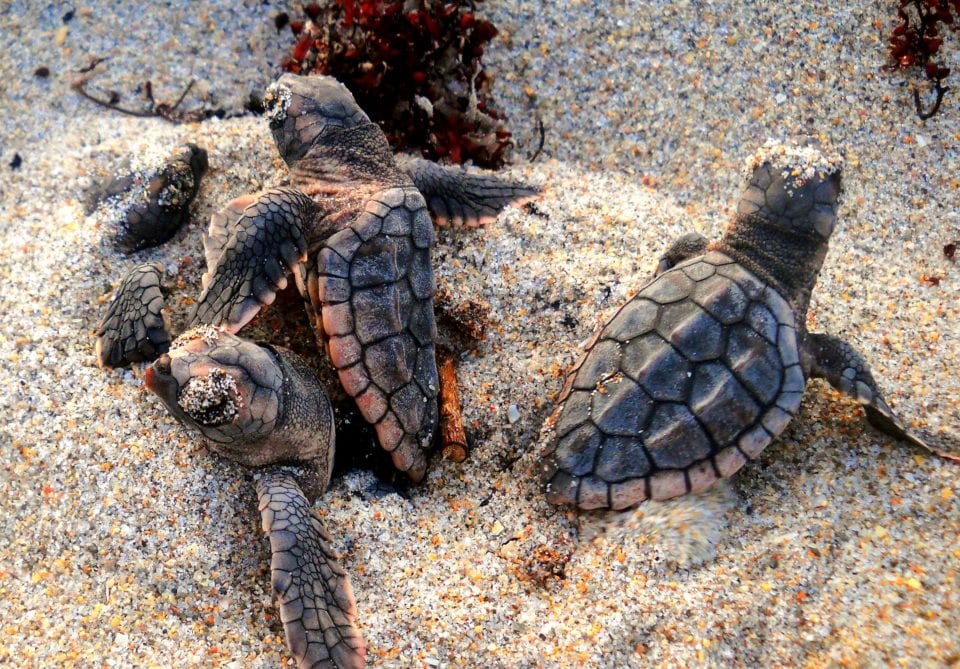
Which Sea Turtles Come to Broward County
South Florida and Oman are the two most prolific turtle rookeries in the world. No place else on Earth comes close to producing as many baby sea turtles. If you have seen the night skies in South Florida, you know the dangers that these little guys face.
Three species dominate the Florida sea turtle landscape with a fourth, very rare, occasional visitor. The most prolific is the Loggerhead, so named for their enormous head used to break the shells of their favorite food – conchs.
Next is the Green Sea Turtles, who were almost hunted to extinction for turtle soup down in the Keys. The green comes from all of the seaweed that they eat.
The final species you’re likely to see is the Leatherback. Their leathery shell works like a dive suit that allows them to descend deep into the depths of the open ocean hunting jellyfish.
There are other sea turtles you might see. Occasionally, you might find a Kemps Ridley or Hawksbill. The Kemps Ridley are the smallest and rarest of the Florida Sea turtles. They primarily live in the Gulf, where they have been decimated by shrimping nets and oil spills. Hawksbills are known for their ornate shells, which caused them to be hunted nearly to extinction to make jewelry and trinkets.
Why Do We Need Sea Turtles Anyway?
Imagine a world without baby sea turtles. Really, just close your eyes for a moment and think of how it would affect your life. Now open them and answer this question – is life any different?
I would love it if you felt a visceral fear of jellyfish overpopulation as their apex predators became extinct. I would be satisfied if you thought that the world would be a little less magical.
Woods need wolves and oceans need turtles. These guys have been around for 100 million years. They outlived the dinosaurs, but our species could wipe them out of existence forever. That is a legacy I do not wish to pass on to my children. Instead, I hope to pass on love, respect, and personal responsibility.

Starting Our Turtle Trek
Even if you don’t spend every summer night volunteering to watch baby sea turtles hatch, you could spend one night educating yourself and seeing something amazing. There were several families with children out on our trek (minimum age of 6) and other teens who had volunteered their summers to help out as interns. I think baby sea turtles help teach these kids first hand what humility and humanity are all about.
We left the quiet of the SeaTurtle OP Headquarters and entered the fray of the Fort Lauderdale Boardwalk on a Saturday night. The revelers were out in force and shops were calling to them with megawatt displays. No wonder one out of every three baby sea turtles heads the wrong way in Fort Lauderdale.
We passed rows and rows of beach chairs stacked up like cordwood for the next business day. The county lights were low and long, but the Fort Lauderdale beach was anything but dark dunes.
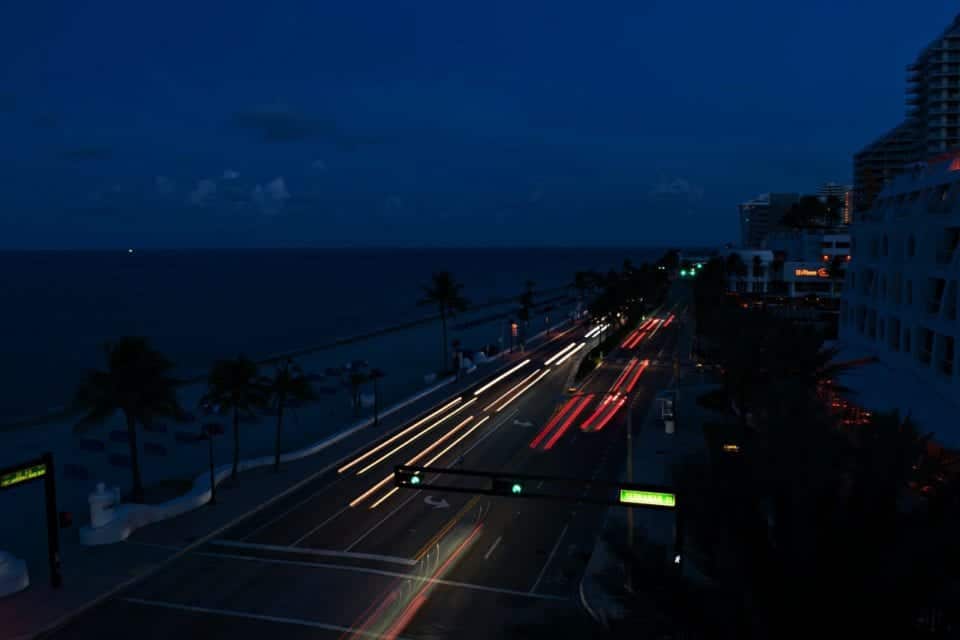
Turtle Trek on Fort Lauderdale Beach
We walked for about a mile, checking on previously hatched nests to see if any stragglers emerged after the mass exodus. The volunteers draw data lines around the nest in concentric circles. If a late hatcher does appear, they can look at the rings to see his trajectory and rescue him, if needed.
After three nights of monitoring, the nest is exhumed looking for survivors and calculating the number of hatched eggs to hatchlings and non-viable eggs that remain.
With increased temperatures in Florida, there have been entire nests where every egg was hard-boiled in the sand. The elevated temperatures have more effects than sterile nests causing a disproportionate amount of females are born in hot nests. Also, the rising seawater takes away nesting habitat. A seawall might protect the city for a while, but it leaves no room for beaches or baby sea turtles.
After a 20 minute walk, we came to our nest – SP-21. It looked like any other patch of beach, except it was staked off with wooden stakes and flagging tape. A small sign warned that federal and Florida law protected the turtles within the nest. It was the endangered species act of 1973 saved several of these species from extinction and gave them a fighting chance.

Waiting for Our Baby Sea Turtle Nest Drop
We sat around SP-21 waiting for “the drop”. Baby sea turtles hatch and wait for a mad rush to the sea. While they are waiting for their brothers and sisters to hatch, they are gathering strength from the last of their yolk sack. Once they feel the sand cool from the burning Florida sun, they make a break for it. They wiggle up to the surface, causing the roof the nest to collapse in a little sinkhole called a drop.
Holly, our volunteer guide said this hatch could go either way. On the ocean side of the stakes, there was a slope the hatchlings could follow down to the waves. On the street side, there were the bright lights of Starbucks.
I had just settled down to the serenade of the surf when Holly’s radio went off. There was turtle trouble farther up the beach.

Sea Turtles Hate Beach Chairs
About four miles up the beach, a momma sea turtle had run into a beach chair. For a turtle, this could be deadly. The difference between turtles and tortoises are that turtles spend their entire life in water except during birth and to lay eggs.
Male sea turtles never return to the land at all. An average Loggerhead can way 200-300 pounds while Leatherbacks can reach 1,000 pounds. It’s all these creatures can do to crawl up the beach. Luckily, for this sea turtle, a volunteer was there to move the chair after she finished laying her eggs and covering the nest.
Luckily for us, the sea turtle decided she could build her nest despite the obstacles and audience. Sea turtles spook easily with too much noise or activity. A mother might take that arduous hike up the sand only to turn around and return to the sea. If we were to run up and move the chair off of her, there is a good chance she would just crawl back to the ocean without laying her clutch.
Of course, the mother sea turtle didn’t know of her imminent rescue. She decided that her last living act would be to build that nest. It was a little turtle miracle, but we knew as soon as she was done laying, the offending chair would be moved and she could return to the sea.
Back on our part of the beach, we had our own little miracle happening. Our nest had started to drop.
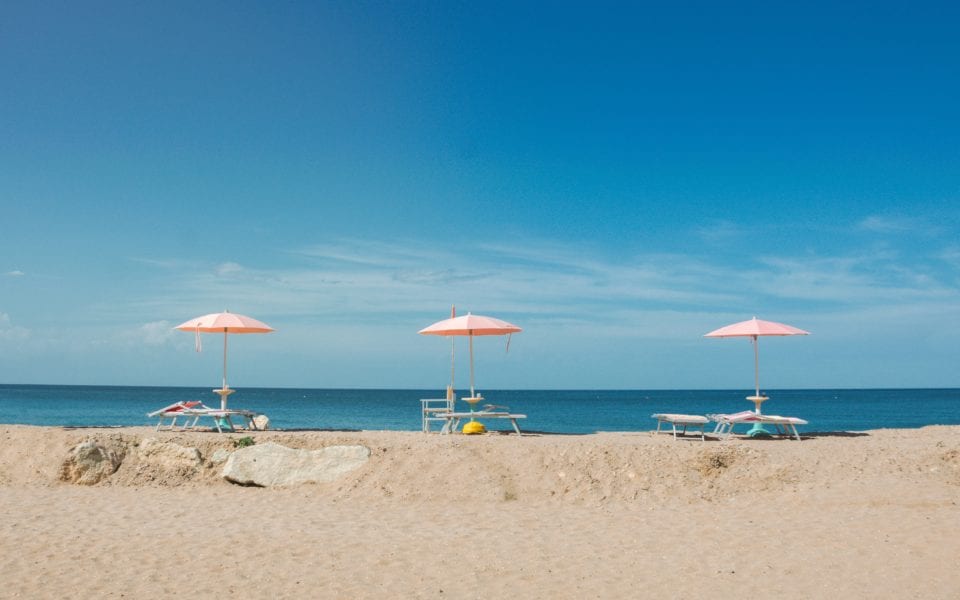
Baby Sea Turtles Hatching
Group by group Holly had us step forward to see the activity. Slowly, the hole got shallower and shallower at baby sea turtles were reaching the surface. Then, the first little guy popped through and Holly had us all back up beyond the 10′ keep out zone.
In the midst of this excitement Siouxzen WhiteCloud, one of the founders of Sea Turtle Oversight Program had arrived with her host of teenage summer interns. The interns quickly refinished the data lines around SP-21 to track any stray turtles. They also clear away any seaweed between the nest and the ocean. An electric buzz of anticipation filled the air, waiting for the turtle’s triumphant march to the sea.
The drop sat right in the middle of the stakes. According to Holly’s predictions, the turtles could either follow the slopes down or the street lights up. A full moon had just risen over the ocean, but it was only glowing orange behind a cotton candy cloud. Would that be enough natural light?
The baby sea turtles were popping out slowly at first, and then all together in mass exodus. We dared not breathe before the mass of baby sea turtles started their charge. Would they choose the bright lights of Starbucks and certain death on Fort Lauderdale Beach Boulevard?

Saving Baby Sea Turtles
Florida has strict rules that STOP must obey per their permit. The baby sea turtles need to travel 10′ in the wrong direction before the volunteers can intervene. Also, only the permitted volunteers can handle the baby sea turtles.
There are other rules too, such as no lights on the beach and certainly no flash photography. Ironically, we couldn’t even block the light from the street. They wanted uncorrupted data on how much light pollution was affecting the baby sea turtles.
There was no hesitation in the turtles. They marched in mass the exact wrong direction towards certain death on A1A and quickly got rescued by the volunteers.
We watched and cheered as the volunteers placed the babies into buckets. Of the 96 baby sea turtles who hatched that night, only one made it to the ocean un-assisted. The other 95 would have died in the street without the intervention of STOP volunteers.
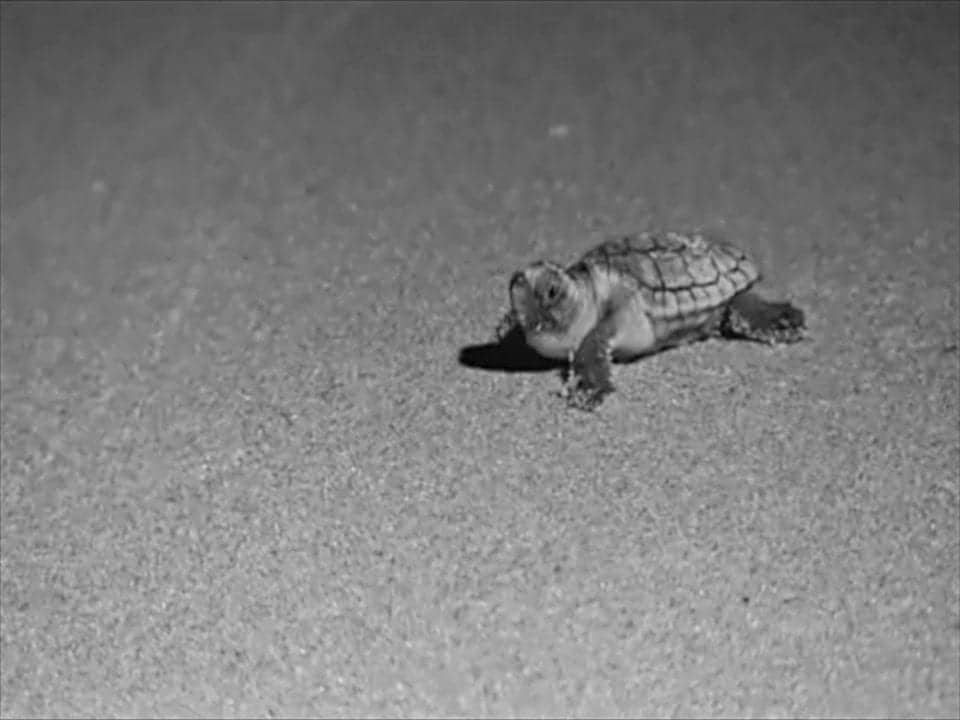
Rescuing Baby Sea Turtles
For a sea turtle, a swift rescue is the next best thing to a clean march to the ocean. They have a limited amount of energy that they need to use to reach the ocean and swim two miles offshore to the Gulf Stream current.
If the babies wander in circles on the beach, they could be too exhausted to be viable in the water. All 95 baby sea turtles were strong and healthy. Once we were sure that no more were leaving the nest, we went to the ocean for a release.
The kids in the crowd threw out turtle names as the volunteers recorded the count. We just stood in the surf a safe distance away and watched that magic moment when the baby sea turtles touched the ocean for the first time and disappeared into the moonlit waves.
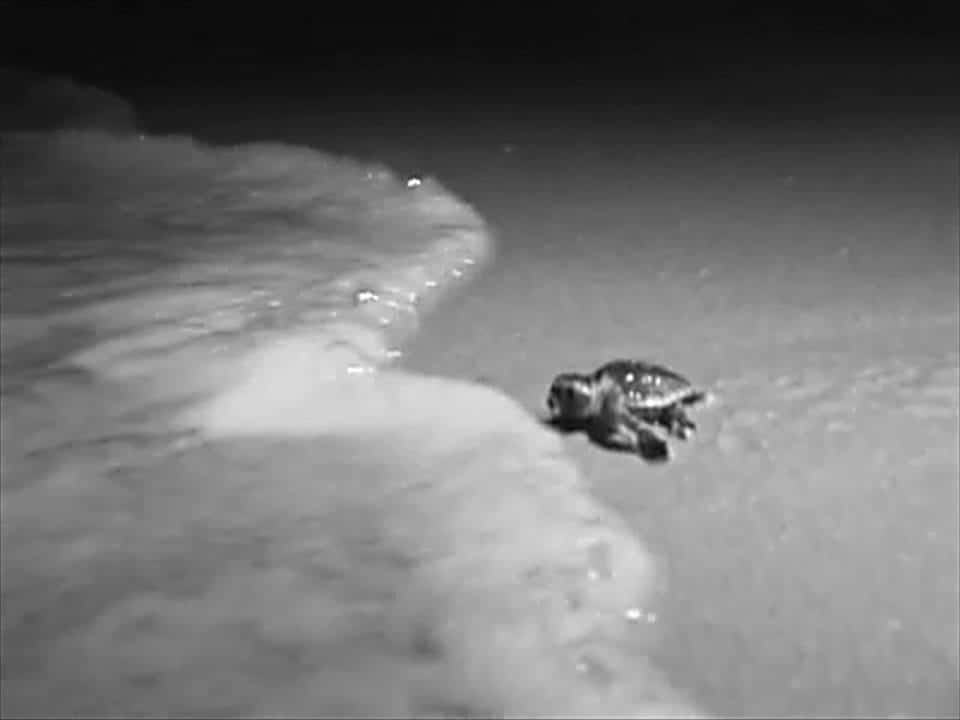
What Happens to Baby Sea Turtles After They Hatch
We watched as Bob, Yertle, and all of the other awkwardly named baby sea turtles began their mad swim to the Gulf Stream Current. There, they will float for thousands of miles into the Sargasso Sea in the middle of the Atlantic Ocean.
The Sargasso Sea is a recirculation zone where all of the North Atlantic currents meet, but don’t cross. It’s very blue and filled with seaweed and pollution, especially plastics. This is where the baby sea turtles grow up amongst every plastic bottle that enters the Atlantic.
It takes about seven years for these babies to mature into adolescence. By that time, they are about the size of dinner plates and begin returning to Florida again. They are not mature enough to mate, like most teenagers, they want to learn how it’s done.
As you can imagine, the mortality rate of baby sea turtles floating in the middle of the Atlantic Ocean is incredibly high. That’s why it’s so crucial that every viable hatchling reaches the ocean.

Mother Sea Turtles Laying Her Eggs
Our night of turtle rescue was not over yet. A passing homeless man told us about a turtle up on the beach in front of the Hilton. Holly quickly dispatched a volunteer to find the turtle. There were so many beach chairs there, we were afraid of what could happen.
The group made its way down and found momma building a nest. She was a little too close to the tideline for Holly’s preferences. If the nest were higher on the beach, it would have been better.
We could see the tracks leading up higher on the beach, but she turned around. Perhaps there were too many partiers on the boardwalk that night.
We passed around a night vision scope and watched as momma dug her nest. She started by wiggling her carapace (shell) until she was sunk into the sand. Then, she dug out more sand with her back feet.
She finally started to lay her eggs, up to 120 at a time, into the nest before she covered it up with sand. The volunteers call this “making a sand angel” because of how much sand gets moved around. This last step is essential to hide the nest from predators.
The entire nesting process took about 30 minutes to complete. Then, momma crawled back to the ocean, leaving a troth from her 250 lb body dragging through the wet sand.
We dispersed for the evening, glowing with the joy of the miracles we just witnessed. The only other animal encounter that came close to this was watching wild baby elephants play in Sri Lanka.
The turtle trek was an incredible experience for us, but is it really doing any good for the turtles?
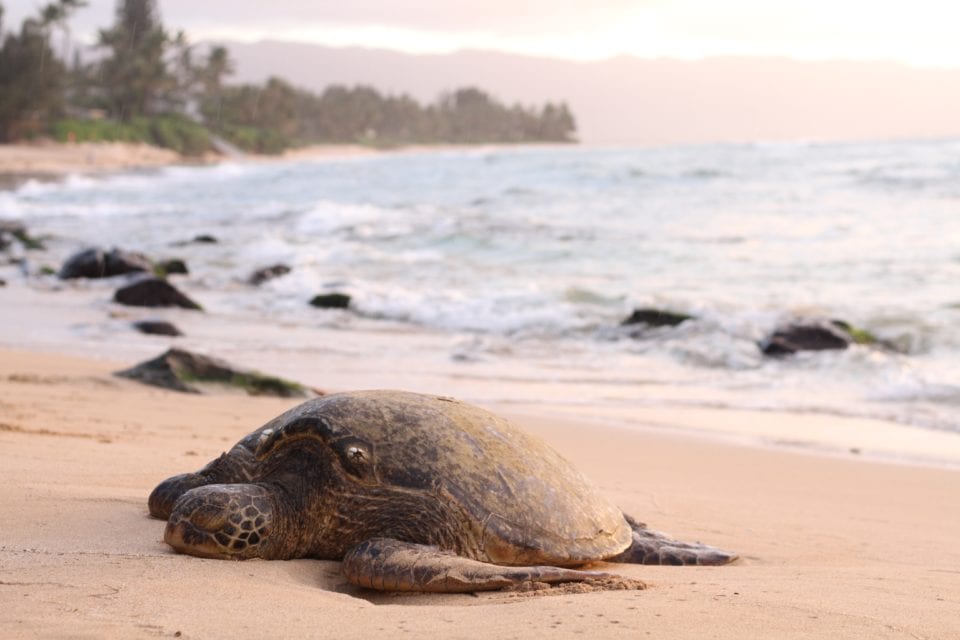
Sea Turtle Conservation is Working
The most common way to track sea turtles population is the number of nests on the beach, but it takes about 25 years for turtles to reach maturity and start nesting. The long return time creates a long delay between implementing protective acts and measuring the impact on the turtle population.
The endangered species act began large-scale sea turtle protection in 1973. By this rule of thumb, the benefits should start being observed around 1985. One Save the Sea Turtle report showed drastic turtle population rebounding from 1981 to 2016. The data from Broward County Sea Turtle Conservation Program showed 1,216 nests in 1981 that has grown to 3,540 nests in 2016.
That’s almost a 3 fold increase. STOP began operations nearly eleven years ago. It’s too soon to expect any of the 250,000 baby sea turtles they rescued to be nesting on the beach, but I am excited to see what the numbers look like in another 20 years.
Also, STOP takes all injured or exhausted sea turtles to Gumbo Limbo Turtle Rescue in Boca Raton. There was no need for that tonight.
It seems like the magic of baby sea turtles reaching the ocean might continue, but everybody has a part to play.
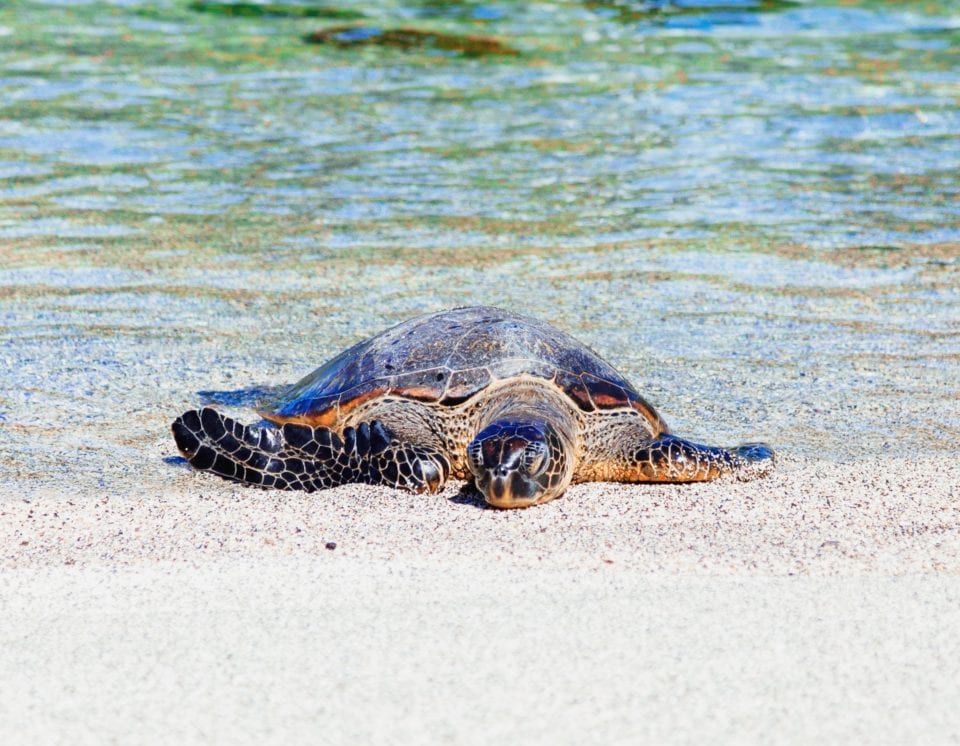
How Can You Help with Sea Turtle Conservation
There are some straightforward ways to help with turtle conservation. Here are just a few:
-
-
- Use reusable bags instead of disposable plastic. These are the bags we (Jenn) keep in our purse at all times- Reusable Grocery Bags
- Never take straws to the beach, better yet, buy a reusable straw- Reusable Straws with Case
- Always clean up after your beach day
- Knockdown sand castles and fill in holes before you leave the beach
- Wear environmentally friendly sunscreen. Here are our picks:
- Use environmentally friendly bug spray. Our favorite is- Bug Soother Spray
- Take a Turtle Trek of your own. The proceeds STOP makes from Turtle Treks is a significant part of their income. (available June-September)
- Teach a child about conservation (maybe even take them on a Turtle Trek 🙂 )
- Donate money to Sea Turtle Conservation
- Become a volunteer
- Close your hotel shades at night if you are at a beach hotel during nesting season
- Advocate for turtle-friendly lighting
- Share this article with a friend or family member
- Finally, watch the following video. If it doesn’t make you ready to go save baby sea turtles, nothing will!
-
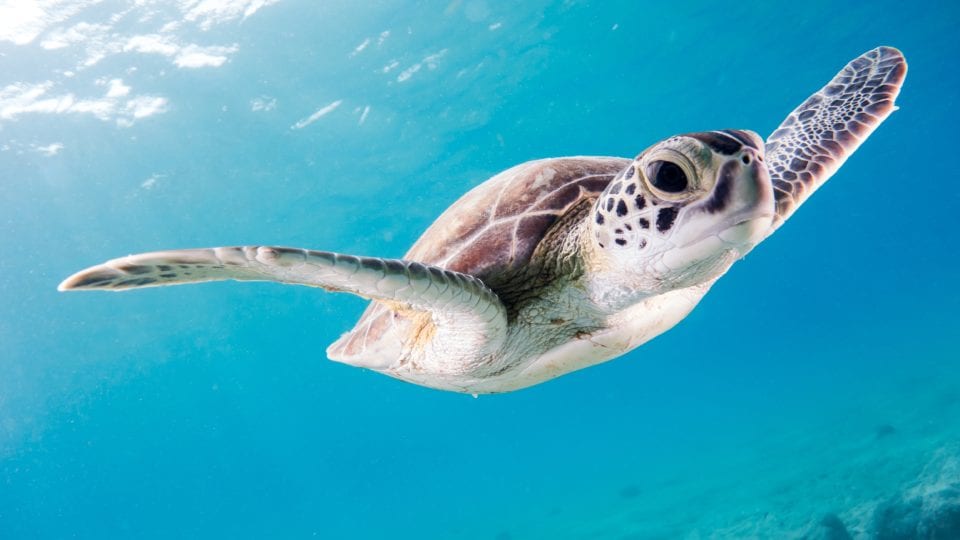


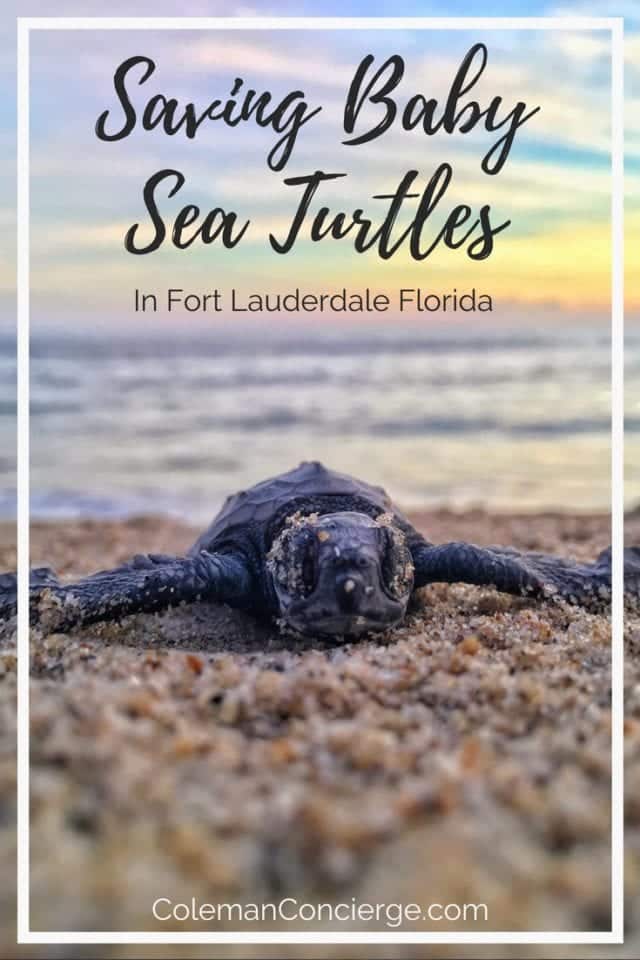
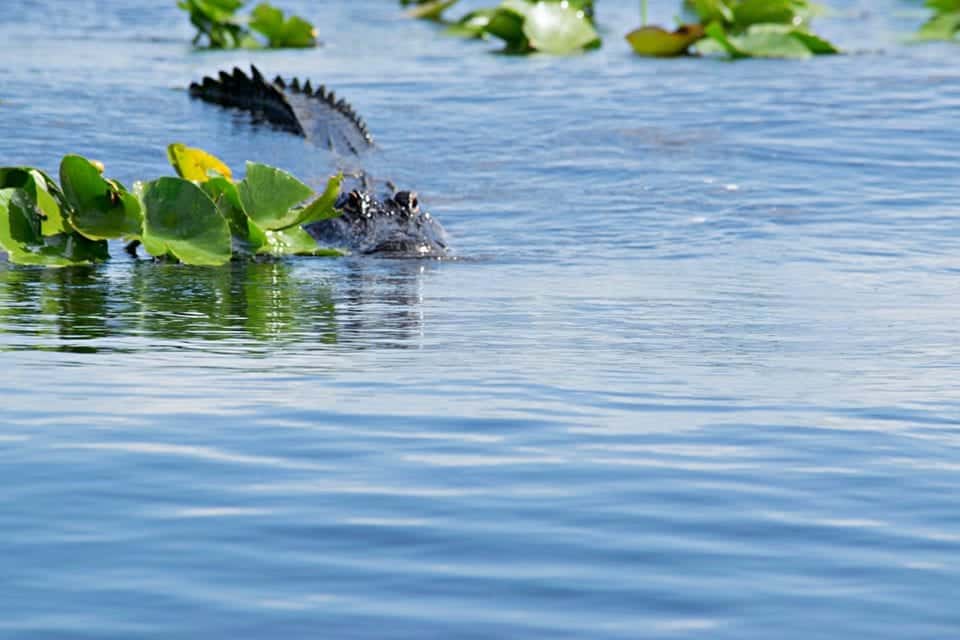
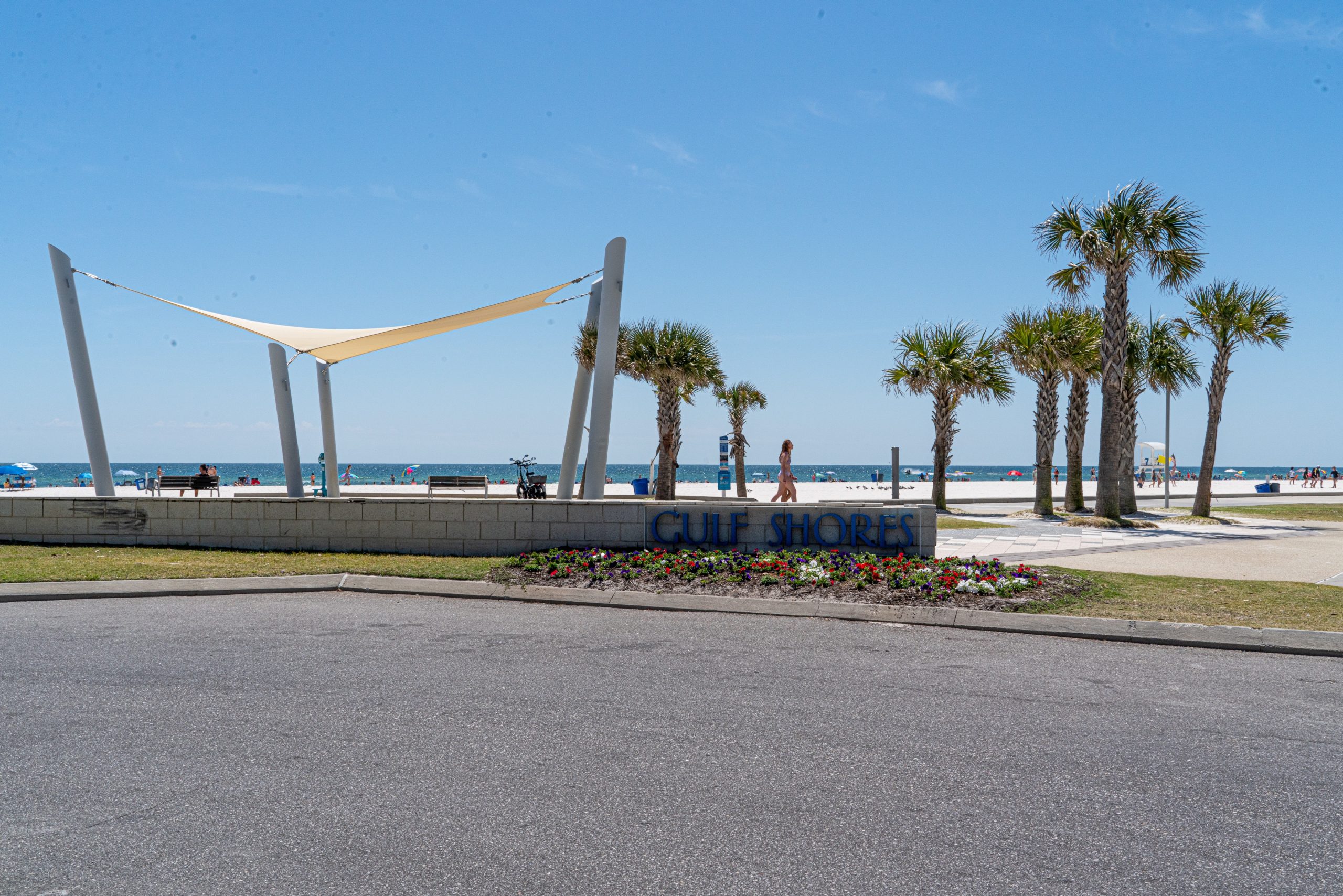
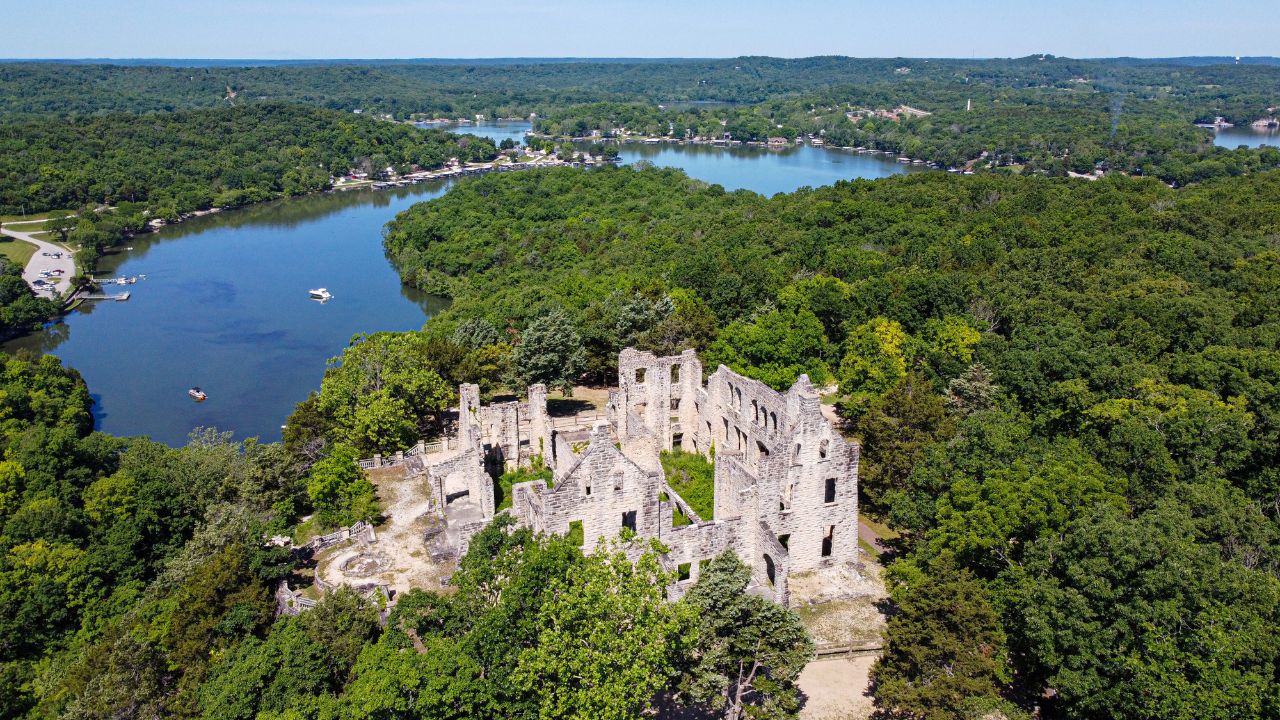
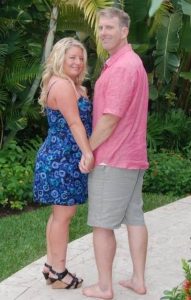 Hi! We are Jenn and Ed Coleman, and together we are Coleman Concierge. It is our goal to inspire you to get out, expand your world, and to seek adventure, even in your own backyard.
Hi! We are Jenn and Ed Coleman, and together we are Coleman Concierge. It is our goal to inspire you to get out, expand your world, and to seek adventure, even in your own backyard.


